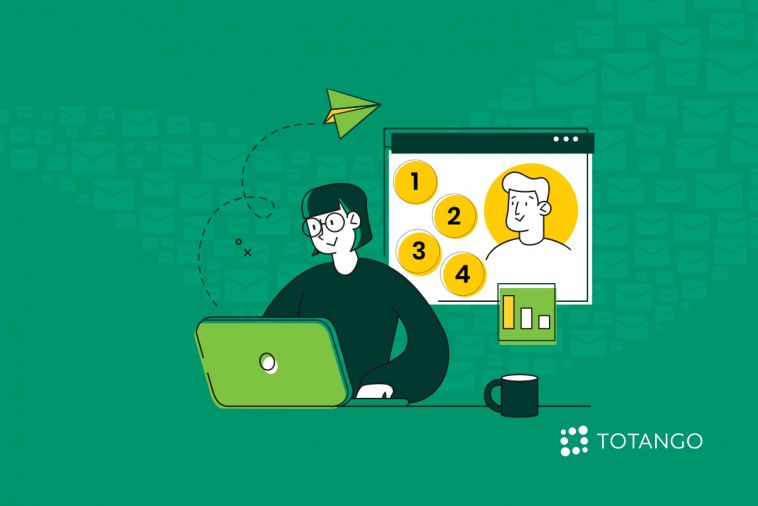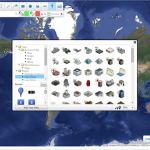- Like
- SHARE
- Digg
- Del
- Tumblr
- VKontakte
- Flattr
- Buffer
- Love This
- Save
- Odnoklassniki
- Meneame
- Blogger
- Amazon
- Yahoo Mail
- Gmail
- AOL
- Newsvine
- HackerNews
- Evernote
- MySpace
- Mail.ru
- Viadeo
- Line
- Comments
- Yummly
- SMS
- Viber
- Telegram
- JOIN
- Skype
- Facebook Messenger
- Kakao
- LiveJournal
- Yammer
- Edgar
- Fintel
- Mix
- Instapaper
- Copy Link
Personalized customer engagement promotes more active use of your product and stronger relationships with your brand. Personalization builds customer trust in your brand, strengthening your relationship. This lays the groundwork for subscription renewals and upsell opportunities. Learn what types of communication you can personalize and what techniques you can use to promote personal engagement.
Why Use Personalized Customer Engagement?
Personalizing your interactions with your customers provides several important benefits. When you address your customer personally, you get their attention and speak to their needs. This increases their engagement with you, promoting more active adoption of your product. It’s important to make sure you’re tracking the proper metrics.
Personalized customer engagement further enables you to make maximum use of digital data. Your interactions with your customers yield vast amounts of data which reveal very granular information about customer segments and individual clients. Personalization helps you put this data to use to optimize your customer interactions for individual customers and groups of customers.
How to Personalize Your Communication
To put personalized engagement into practice, there are two main keys to bear in mind:
- Different types of communication you can personalize
- Personalization tactics you can apply to different types of communication
Let’s look at each of these elements.
Different Types of Communication You Can Personalize
You can personalize most types of communication with customers. Some which are particularly powerful include:
- Emails
- Customer goal progress updates
- Support tickets and customer escalations
- Periodic check-ins
Each of these types of communication can be leveraged at strategic points throughout the customer lifecycle.
Emails
Using names in emails is a common personalization practice in widespread use. It can be used in any email where you communicate with customers. In a SaaS context, it is especially useful when applied to onboarding emails in conjunction with digital-first customer success technology such as Totango Spark.
A digital-first approach to customer success stands in contrast with manual and hybrid approaches. Manual customer success interactions can incorporate personalization into emails, but only in one-on-one communications, limiting the scale and value of this approach. A hybrid approach combines manual methods with limited automation, as in the use of an email autoresponder. This allows you to personalize communication on a larger scale, but only to the extent you can insert a customer’s name into an email.
In contrast, a digital-first approach that uses all available digital information on a customer lets you send automated onboarding emails which are personalized on a granular level. You can incorporate not only customer names, but also information about the customer’s profile, purchase, behaviors and product usage and consumption data. This allows you to send personalized onboarding emails triggered by what actions a customer takes post-purchase, for instance. A digital-first approach turns email personalization into a far more versatile tool.
Customer Goal Progress Updates
Digital-first customer success management focuses on helping customers achieve their goals. Personalized communication can facilitate this when incorporated into updates on customer progress toward goals. Such updates can include personalized data about KPIs the customer is using to measure progress, making this a very practical type of personalization directly relevant to the customer’s needs and objectives. This strategy can be integrated with a customer success plan for an even higher degree of personalization. Totango’s SuccessBeats offer automatic value by reflecting personalized usage, allowing you to help your customers enhance their customer success campaigns.
Support Tickets and Customer Escalations
Another place to deploy personalization is during the support process. Using personalized data can help success teams and customer service teams provide more efficient support based on what customer data reveals about the customer’s exact needs. Personalized data can be useful for accessing customer account information to speed up support time, pinpointing what customers need help with and matching customers with the right personnel to assist them.
Periodic Check-ins
Periodic check-ins provide another opportunity to deploy personalization. A check-in can incorporate granular data about the customer’s adoption activity and support history.
Check-ins can be scheduled in advance on a weekly, monthly, quarterly or another basis. They can also be triggered based on customer behavior. For instance, a delay in onboarding, a support issue, or an upcoming renewal might trigger a check-in.
Personalization Tactics You Can Apply to Different Types of Communication
The communication channels covered above lend themselves to a number of tactics that can be used to personalize communication. These include:
- Using names in emails
- Personalizing product usage data
- Using personalized in-app activity and achievement data
- Leveraging data on feature usage
These techniques can be used individually or welded into a unified personalization strategy.
Using Names in Emails
We’ve already discussed the example of using names in onboarding emails. However, this technique can be used in many different email contexts. Any subject line lends itself to name personalization. Names can be incorporated into email greetings and body text as well.
Combining names with other personalized data can multiply their value. For example, you can reach out to a customer by name to follow up on a support issue. Or you can email a segment of your list by name to extend an upsell offer based on purchase and usage history data.
Personalizing Product Usage Data
Data from product usage can be put to valuable use. For example, if someone is slow to onboard, this can trigger a personalized support email or outreach from a team member. If a customer’s usage history indicates they’re ready to start using an advanced product feature, this might trigger a message with a tutorial tip. Usage data may also highlight an upsell opportunity.
Using Personalized In-app Activity and Achievement Data
Data on customer in-app activity and achievements provides valuable opportunities for personalization. Communicating with customers while they’re in-app gives you opportunities to deliver relevant information and support based on what the customer is doing at that moment. This can come in such forms as prompts, pop-up tips or emails triggered by in-app activity.
Customer achievement benchmarks can also occasion relevant personalized in-app communication. For example, after a customer completes onboarding, this might trigger a message suggesting next steps.
Leveraging Data on Feature Usage
Feature usage presents another specialized opportunity for personalized communication. For example, a customer who uses a certain advanced feature frequently may be a candidate for an upsell offer. On the other hand, a customer who isn’t using a basic feature may be at risk of churn and in need of support.
Use Personalized Customer Engagement
Personalized customer engagement can help you promote the active adoption of your product and build trust with your customers, laying a foundation for subscription renewals and upsell opportunities while building loyalty that you’re able to measure via NPS and CSAT. You can incorporate personalized engagement into emails, customer goal progress updates, support tickets and escalations, and periodic check-ins. Tactics for personalizing engagement include using names in emails, deploying customized product usage data, and noting in app-activity and feature usage.
Totango’s Spark customer success platform is designed to help you maximize the power of data personalization by integrating all data on your customers so you can trigger automated actions specific to granular data on customer segments and individual clients. Try Spark for free to experience how you can put data personalization to work for you.




